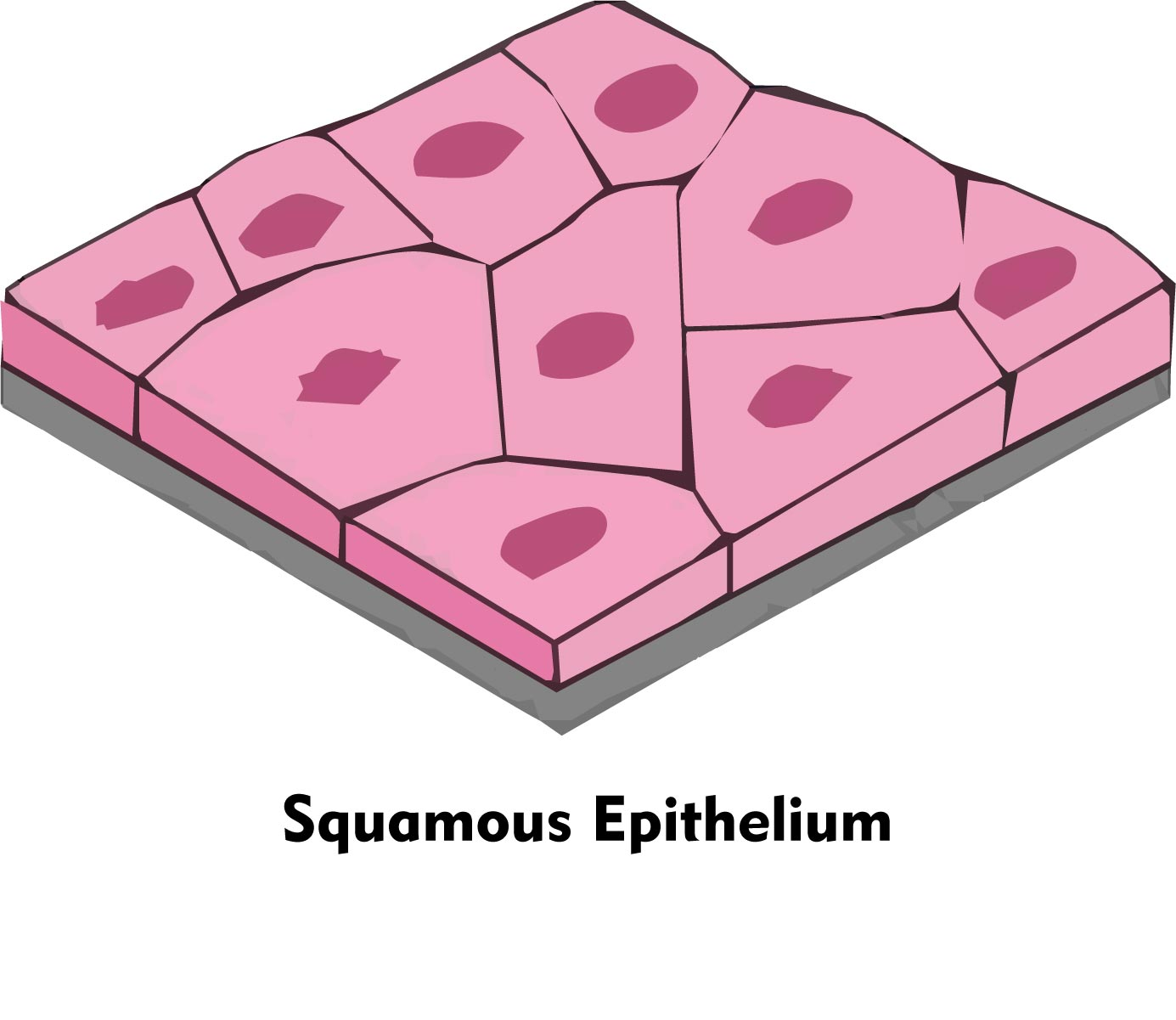
Lining of the blood vessel is made up of
(a)Squamous epithelium
(b)Cuboidal epithelium
(c)Columnar epithelium
(d)None of the above
Answer
482.7k+ views
Hint: These types of epithelium are flat cells that are very thin, and occur as the covering epithelium of the alveoli of the lungs, the glomeruli, and the capsule of the kidney.
Complete answer:
The epithelium is a layer of cells closely bound to each other resulting in the formation of a continuous sheet. In animals’ modification of these cells with outgrowth and ingrowth is commonly seen.
The lining of the blood vessel is made up of squamous epithelium.
Additional Information:
Characteristics of epithelial cells-
-the outline of the cell is marked.
-the nucleus is large and spherical or ellipsoidal.
-the cytoplasm of the cell is usually large in the amount and the presence of many granules is also seen.
According to the surrounding the epithelium can be protective (may produce outgrowth like nails, horns on animals), absorptive, or secretory (sebaceous gland and mammary glands).
The cells of the epithelial can be of various types like columnar, simple, squamous, irregular, or ciliated.
The columnar epithelium covers the intestinal tract from the end of the esophagus to the rectum.
The cubical epithelium is found in many glands and ducts like in the kidney.
Ciliated epithelium lines the trachea, bronchi of the lungs, nasal cavities, uterus, and oviducts of female and in male epididymis and vasa deferens.

So, the correct answer is,’ Squamous epithelium.’
Note: When the cells of an epithelial surface are several layers deep, they can be distinguished into: stratified (mouth, esophagus, rectum), stratified ciliated (a respiratory passage, the vas deferens, and the epididymis), and transitional epithelium (urinary bladder).
Complete answer:
The epithelium is a layer of cells closely bound to each other resulting in the formation of a continuous sheet. In animals’ modification of these cells with outgrowth and ingrowth is commonly seen.
The lining of the blood vessel is made up of squamous epithelium.
Additional Information:
Characteristics of epithelial cells-
-the outline of the cell is marked.
-the nucleus is large and spherical or ellipsoidal.
-the cytoplasm of the cell is usually large in the amount and the presence of many granules is also seen.
According to the surrounding the epithelium can be protective (may produce outgrowth like nails, horns on animals), absorptive, or secretory (sebaceous gland and mammary glands).
The cells of the epithelial can be of various types like columnar, simple, squamous, irregular, or ciliated.
The columnar epithelium covers the intestinal tract from the end of the esophagus to the rectum.
The cubical epithelium is found in many glands and ducts like in the kidney.
Ciliated epithelium lines the trachea, bronchi of the lungs, nasal cavities, uterus, and oviducts of female and in male epididymis and vasa deferens.

So, the correct answer is,’ Squamous epithelium.’
Note: When the cells of an epithelial surface are several layers deep, they can be distinguished into: stratified (mouth, esophagus, rectum), stratified ciliated (a respiratory passage, the vas deferens, and the epididymis), and transitional epithelium (urinary bladder).
Recently Updated Pages
Master Class 11 Accountancy: Engaging Questions & Answers for Success

Express the following as a fraction and simplify a class 7 maths CBSE

The length and width of a rectangle are in ratio of class 7 maths CBSE

The ratio of the income to the expenditure of a family class 7 maths CBSE

How do you write 025 million in scientific notatio class 7 maths CBSE

How do you convert 295 meters per second to kilometers class 7 maths CBSE

Trending doubts
10 examples of friction in our daily life

One Metric ton is equal to kg A 10000 B 1000 C 100 class 11 physics CBSE

Difference Between Prokaryotic Cells and Eukaryotic Cells

State and prove Bernoullis theorem class 11 physics CBSE

What organs are located on the left side of your body class 11 biology CBSE

Write down 5 differences between Ntype and Ptype s class 11 physics CBSE




